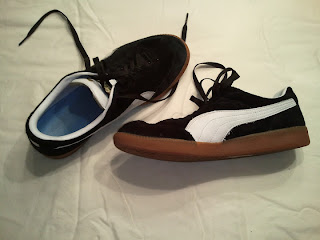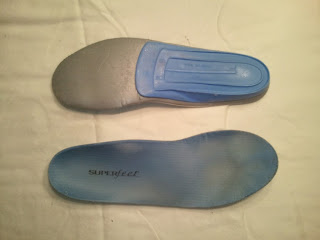Generally, I’m all in favor of fitness activities that you can do solo. This is largely personal preference, but I’ve also seen serious motivation problems come out of being too dependent upon other people. It normally goes like this: you and a buddy get a gym membership/make a fitness pact and motivate each other. Eventually one of you loses motivation, which means then it’s on the other person to constantly provide the get up and go. Which burns them out. And then you’re just sitting on the couch, sharing a tub of hummus and saying man, you should really get back to working out.
Be your own motivation. Don’t let friends drag you out of the habit.
That said, exercising with other people is normally way more fun than doing it alone. I did (and will hopefully do again in a few months) kung fu for eight years, and talk about group energy. Being around other people who are enthusiastic about whatever you’re doing helps make you more enthusiastic, and makes it easier to push through when you’re tired.
I’m an incredibly competitive person by nature. Having other people around makes me push myself in ways I never thought possible, because I don’t want to get left behind. I want to be in the front of the pack, damnit! (When you’re not the lead dog, after all, the view never changes.)
Which brings us to group rides for cycling. This is a thing I’ve gotten in to since coming to Houston for the summer. It’s got the same energy and enthusiasm bonus as being in a big class for kung fu or something else like step. I love it and can’t recommend it enough.
The bonus, of course, for group cycling rides is they’re also much safer than riding solo if you’re on the roads. Once you get a critical mass of cyclists (6-10, I’d say) you can easily take over an entire lane on the road and cars are no longer brave enough to fuck with you because you have the numbers.
So how do you find group rides? Start with your local bicycle shop. A lot of group rides use those as gathering points, and are even sponsored by them or run by the team that calls that shop its home. In Houston, I regularly participate in the Bikesport and Planetary Cycles rides, and have done the Bike Barn ride.Houston also has a cycling group on meetup.com, and I wouldn’t be surprised if a lot of other big cities do as well.
Joining a group ride:
You’ll notice the ones I linked to are free (as far as I know, most for fun group rides should be!) and run basically as a show up on time and ride affairs. It’s all fairly simple. There are a couple of things you should know about, though.
1) Drop versus no drop. Unless a ride specifically states that it is “no drop” assume that it’s a drop ride. On a no drop ride, it’s the group policy to not leave people behind. This can happen by accident on occasion, but normally the people in charge of the ride will keep at least one person at the back of the group to make sure stragglers don’t get left alone or lost. No drop rides will also pull over and wait to let people catch up if the group gets cut in half by a giant hill or a stop light. There is nothing wrong with drop rides, per se, but if you’re just starting out (and don’t know the area you’re riding in well) than a no drop ride is much friendlier and less intimidating.
2) How fast do you go? You’ll notice most rides have a minimum speed requirement. This can seem kind of tough, but it’s really to help keep the group together and minimize frustration. (You get frustrated if you’re left behind a lot, they get frustrated if someone is really slowing the group down.) This is one of the places where having a computer for your bike is useful, since that will give you a good feel for your speed. However, you can also just do a route of known length and estimate your speed off of that.
What does the speed number actually mean? It tends to vary, from what I’ve seen. One of the rides I do asks for an average speed of 15 mph at minimum. Keep in mind that your average speed includes all the less than stellar times you’re accelerating or decelerating for stop lights, for example. So an average of 15mph means that you’re actually spending most of your time going significantly faster (probably around 18-20 mph) and will be comfortable sustaining that pace.
Another of the rides I go on is big enough that it’s divided into four groups: A, B+, B, and C. Each of those groups has a speed associated with it, and that speed is whatever you can comfortably maintain. So the C group is 15-18 mph sustained speed, which means a much lower (probably 13-ish mph) average. I learned this by starting off with the C group the first time I did the ride because I thought they wanted 15mph average, and I ended the ride bouncing up to the B+ group because I wasn’t having to work hard enough. (The B+ was just a little too fast for me, though!)
So how do you know? The best thing you can do in a situation like that is ask other people in the ride and find out what the speed requirement means. If in doubt, start with the slowest group, hang with them, and bump up to a faster group if you’re not working up enough of a sweat.
3) Ride safe. Check what the ride requirements say to start with. Some evening rides will be out when it’s dark, so you must have a flashing tail light and a headlamp. Honestly, those things are a good idea to have anyway, even if you only ride during the day. Always wear your helmet. Bring a spare tube and some CO2 canisters in case you get a flat.
Most big rides will have a quick safety talk for new riders before they get going, so make sure you get there a little early for that the first few times you go. Here are a few things I’ve learned, however:
Communicate with other riders so they know if you’re passing them. If the group is coming to a light or a stop, people will often yell “stopping” or “slowing” to warn the back of the group. Pass that back. Signal turns so everyone knows where they’re going. You’ll also see other hand signals get used, to warn people about potholes and the like. These things, you eventually learn by observation, but you have to start by paying attention. Listen. If you’re like me and can’t live without musical accompaniment, only wear one earbud, and keep it in your right ear so you can hear the other riders and the street noise. (If you’re in a left drive company, keep your right ear free instead.)
4) The after party. Sometimes after a ride, everyone goes out for beer and pizza. This is the best part.









